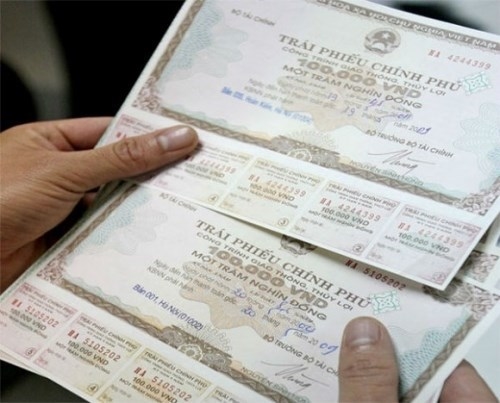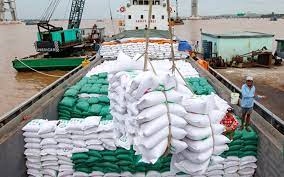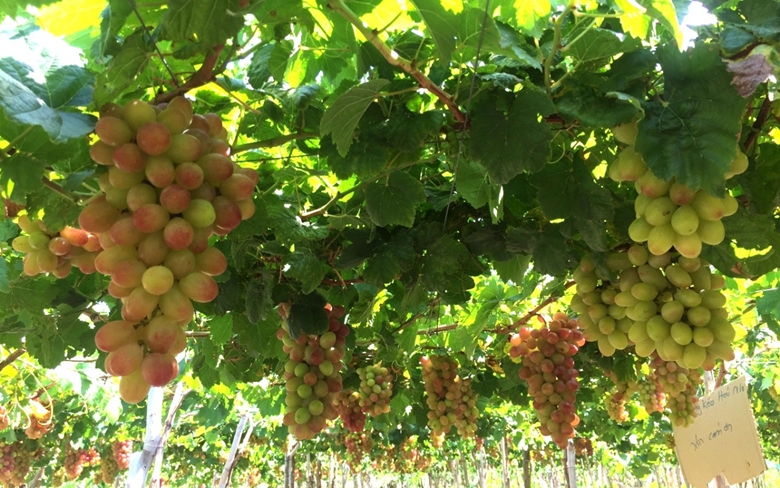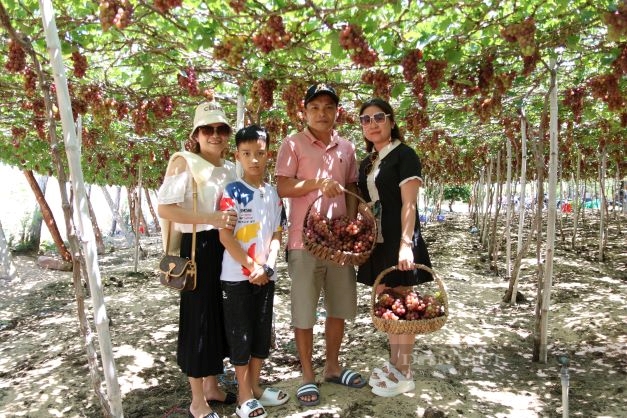 |
|
Vietjet launches online check-in service (Source: Vietjetair.com.vn)
|
With the service, passengers quickly check-in online and choose their seats before their flights at its website www.vietjetair.com or mobile app without waiting in line at the check-in counter.
Accordingly, passengers can check-in online for all domestic flights from 24 hours to 1 hour before the departure time.
For international flights, the online check-in service has been applied to airports including Noi Bai, Melbourne, Sydney (Australia), New Delhi, Ahmedabad, Mumbai (India) and continue updating the next airports at the airline's website. Online check-in is available from 24 hours to 90 minutes before the departure time.
The new-age carrier Vietjet has not only revolutionised the aviation industry in Vietnam but also been a pioneering airline across the region and around the world. With a focus on cost management ability, effective operations, and performance, applying the latest technology to all activities and leading the trend, Vietjet offers flying opportunities with cost-saving and flexible fares as well as diversified services to meet customers’ demands.
Vietjet is a fully-fledged member of International Air Transport Association (IATA) with the IATA Operational Safety Audit (IOSA) certificate. As Vietnam’s largest private carrier, the airline has been awarded the highest ranking for safety with 7 stars by the world’s only safety and product rating website airlineratings.com and listed as one of the world's 50 best airlines for healthy financing and operations by Airfinance Journal in many consecutive years. The airline has also been named as Best Low-Cost Carrier by renowned organizations such as Skytrax, CAPA, Airline Ratings, and many others.
Nearly 6.94 billion USD raised through Gov't bond auctions in five months
The State Treasury raised 162,952 billion VND (nearly 6.94 billion USD) worth of Government bonds via auctions on the Hanoi Stock Exchange (HNX) in the first five months of 2023, up 188.4% year-on-year, said the Vietnam News Agency.
The amount was equal to 48.4% of the issuance plan in the second quarter, and 40.74% of the plan set for 2023.
In May alone, as many as 23,269 billion VND, or 75.06% of the total G-bonds on offer, was mobilised via 17 auctions on the HNX.
 |
|
Nearly 6.94 billion USD raised through Gov't bond auctions in five months
(Photo: daibieunhandan.vn)
|
Most of the total volume offered in the month was 15-year and 10-year bonds, accounting for 43.4% and 32.1%, respectively.
Interest rates continued their downward trend in all terms, with a decrease of 27-35 basic points compared to the last session of April.
In the last auction of May, the interest rates for 5-, 10-, 15-, 20-, and 30-year terms were 2.4%, 2.95%, 3.05%, 3.19% and 3.4%, respectively.
On the secondary market, the State Treasury mobilised 132,568 billion VND in May, with the average trading value reaching 6,628 billion VND per session, up 1.43% from the previous month. The total volume traded via outright transactions made up 56.69% of the total.
Bonds with 10-, 15-, and 10-15 year maturity were traded the most, accounting for 25.75%; 18.02% and 11.4%, respectively.
Vietnam to diversify rice export markets
Vietnam will develop and diversify rice export markets with a reasonable, stable, and effective scale, market and product structure under a strategy recently approved by the Prime Minister, the Vietnam News Agency reported
The Strategy on Development of Vietnam's Rice Export Markets until 2030 sets the targets of improving the value of exported rice, and reducing export volume by 2030 to about 4 million tonnes with a turnover of about 2.62 billion USD.
The Ministry of Agriculture and Rural Development reported that last May, Vietnam shipped abroad some 1 million tonnes of rice valued at 489 million USD, raising rice export volume and value in the first five months of this year to nearly 3.9 million tonnes and 2.02 billion USD, representing year-on-year increases of 40.8% and 49%, respectively.
 |
|
Vietnam to diversify rice export markets (Photo: daidoanket.vn)
|
In the first four months of this year, the Philippines was Vietnam’s biggest rice importer, making up 42.4% of the market share.
Among Vietnam’s 15 biggest rice buyers, Indonesia experienced the sharpest rise in value (26.3 times), according to the ministry.
Under the strategy, Vietnam's rice sector will also increase exports of high-quality rice. Specifically, between 2023 and 2025, the proportion of low- and medium-grade white rice will not exceed 15%; high-grade white rice will account for about 20%; fragrant rice, japonica rice and specialty rice 40%; sticky rice 20%; rice products with high added value such as nutritious rice, parboiled rice, organic rice, rice flour, rice-processed products, rice bran and some other rice by-products 5%; and rice with brand names 20%.
Nguyen Van Thanh, Chairman and CEO of Phuoc Thanh IV Trading - Production Company Limited, said the adjustments are suitable, explaining that the Mekong Delta, Vietnam's rice bowl, reduced the number of rice crops to only one from three.
Experts said intensive processing will help Vietnam raise its rice value by multiple times, noting it requires investment in science-technology to put the grain on market shelves in Europe, the US, Canada, Japan and the Republic of Korea (RoK).
Deputy Minister of Agriculture and Rural Development Phung Duc Tien said up to 85% of Vietnamese rice varieties are high-quality ones. Therefore, prices of Vietnamese rice have exceeded those of Thailand to stand at 485-495 USD per tonne.
Given requirements of markets and free trade agreements, the research of high-quality rice varieties with affordable prices has proven effective in rice production, especially in terms of food security, he said.
Ninh Thuan province develops grape eco-system
The south-central province of Ninh Thuan has introduced new grape varieties and advanced farming techniques to improve farmers’ incomes, the Vietnam News Agency said.
The country’s largest grape producing province has more than 1,000ha under the fruit and an annual output of 26,000-28,000 tonnes, according to its Department of Agriculture and Rural Development.
 |
|
A corner of grape garden in Ninh Thuan province (Photo: truyenhinhdulich.vn)
|
It grows mostly two table varieties, Red Cardinal and NH 01-48, and the wine grape Syrah.
To add value, the province has developed models of growing high quality grape to Vietnamese and global good agricultural practices (VietGAP and GlobalGAP), and organic standards, and used advanced farming techniques in recent years.
Some 31 per cent of the grape growing area sees the use of advanced techniques such as automatic irrigation and polygreen houses, and quality standards like VietGAP and GlobalGAP, according to the department.
The local Nha Ho Research Institute for Cotton and Agriculture Development has created many new grape varieties like NH 01-152 and NH04-102.
Table grape variety NH 01-152 has a weight of 500-800 grammes per bunch, is wine red in colour, has slightly sweet and crunchy flesh, and an average annual yield of 12-16 tonnes per hectare.
The institute is providing the variety to farmers and cooperatives to replace some degenerated ones.
Traders buy NH 01-152 in orchards at a price of 100,000-120,000 VND (4.2-5.1 USD) a kilogramme, three or four times the price of Red Cardinal and two to three times that of NH 01-48.
Phan Cong Kien, deputy head of the institute, said the institute has also created the seedless variety NH04-102, also called black finger grape, and provided it for farmers to grow on an experimental basis.
It could be used to make raisins, he added.
Many farmers are growing new varieties in hi-tech polygreen houses, and they are very popular with consumers.
The province plans to expand its grape growing area to 1,115ha and annual output to 27,652 tonnes this year, and to 1,770ha by 2025, including 1,070ha grown to VietGAP, GlobalGAP or organic standards.
It is creating favourable conditions for farmers to tie up with cooperatives and companies to develop value chains for grapes and grape products.
Dang Kim Cuong, director of the Department of Agriculture and Rural Development, said the province has taught farmers techniques for preserving grapes and creating facilities for drying and storing them.
It has assisted establishments with making products from the fruit such as jams, raisins, wines, and syrups, he said.
It is developing more grape-related products and offering tourism services at orchards.
Visitors to orchards can harvest grapes, eat them and buy fresh fruits and products made from them.
Thai An grape village in Ninh Hai district’s Vinh Hai commune has become a popular tourism destination.
Pham Thi Dung, who has a 4,000sq.m grape orchard in the village, said she grows four table grape varieties to serve tourists.
 |
|
Tourits visit a grape garden in Ninh Thuan province (Photo: danviet.vn)
|
She also sells products such as raisins, syrups, wines, and juices, she said.
“To have beautiful looking and even-sized grapes, my family has adopted VietGAP standards, reducing the use of chemical pesticides and fertilisers to make the grape plants grow well and offer high yields.”
Nguyen Khac Phong, director of the Thai An General Agriculture Cooperative in Vinh Hai commune, said members grow 20ha of NH 01-152 grape, which has been recognised as a four-star product under the national “One Commune- One Product” (OCOP) programme.
The cooperative also has five three-star OCOP products made from grapes, including wines and raisin.
Nguyen Van Hoa, director of the province Department of Culture, Sport and Tourism, said the eco-tourism model of visiting grape orchards is developing rapidly in Ninh Hai, Ninh Phuoc and Ninh Son districts, helping diversify tourism products.
The department has taught orchard owners how to serve tourists, he said.
Many owners have invested in tourism facilities to attract tourists./.